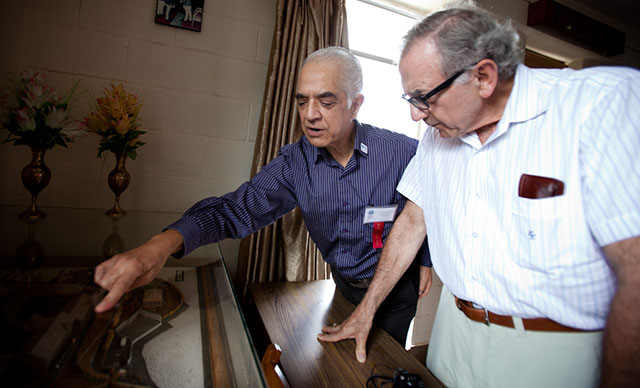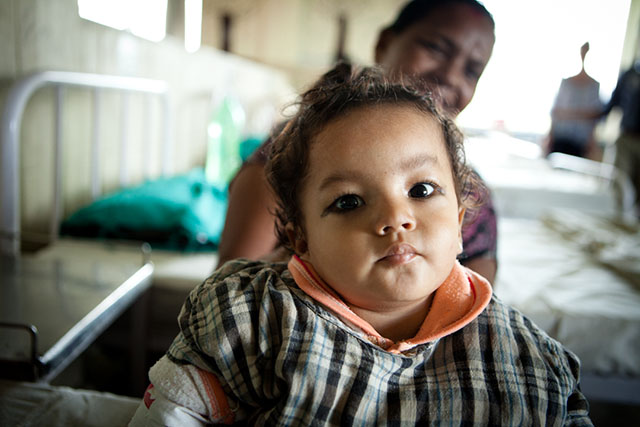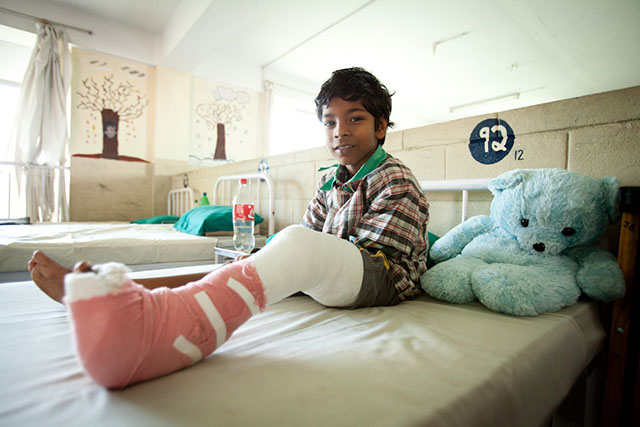Dr. Ashok Banskota on why children in Nepal need our help

No matter where they live in the world, a disabled child experiences struggles that many of us will never have to face. In Nepal, these difficulties are compounded by the rugged terrain, the remoteness of villages, and poverty. A disabled child in Nepal cannot go to school or help in the fields. There is no place for these children, and no future. Often, they are left alone in dark rooms, ostracized, or even sold to circuses where they live a short life of humiliation.
2011 Health Award Honoree Dr. Ashok Banskota knew he had the skills to help many of these children and give them a second chance at life. Now, he runs the Hospital and Rehabilitation Centre for Disabled Children (HRDC), a world-class center that treats children for everything from club foot to tuberculosis of the spine.

Today, co-founders Harry and Kay, celebrity ambassador Stephanie March and photographer Michael Crook are in Nepal visiting the HRDC and meeting some of the children helped by Dr. Banskota. In between touring the facility, we took a moment to talk with him about the challenges of working in Nepal, and why he keeps doing what he does.
Q: What inspired you to start the HRDC?
A: The magnitude of the problems that were prevalent at the time did not permit me to turn the other way. And the immense satisfaction of helping these needy children spurred me on to not give up. There was always a steady stream of hurdles!
Q: You completed your orthopedic residency in New York before deciding to return to Nepal. Why did you decide to go back?
A: When I returned to Nepal in the 70s, I didn’t come back with a grand plan. The overwhelming need that I saw when I got back made my decision to stay and work in Nepal very easy. It has been a long and difficult struggle but one that has been totally worth it.
Q: Where do you see the HRDC going in the next 10 years?
A: I see HRDC emerging as a leader in the field of children’s disability care with expanded capacities in teaching and training in musculoskeletal disorders, possibly in the context of a medical school in collaboration.

Q: The WHO recently published a report that said Nepal has about 2 doctors for every 10,000 people. What has been your experience as a doctor in Nepal? Do you ever feel overwhelmed by the number of patients you have to see?
A: In recent years, the number of graduate doctors has increased steadily in Nepal, but this is minuscule compared to what is necessary. Also, the distribution of available doctors is uneven, with very few available in the most rural places, where the need is greatest. We do see a very high volume of patients at our centers and are always striving to extend our services to more patients.
Q: How did the World of Children help you to expand your programs?
A: The World of Children has certainly brought direct and indirect benefits. People appreciate the work in the local community; there has been more coverage in the local press. Our donors all feel proud that they are backing an Award winner.
Check back soon for more beautiful photos and stories from Nepal!